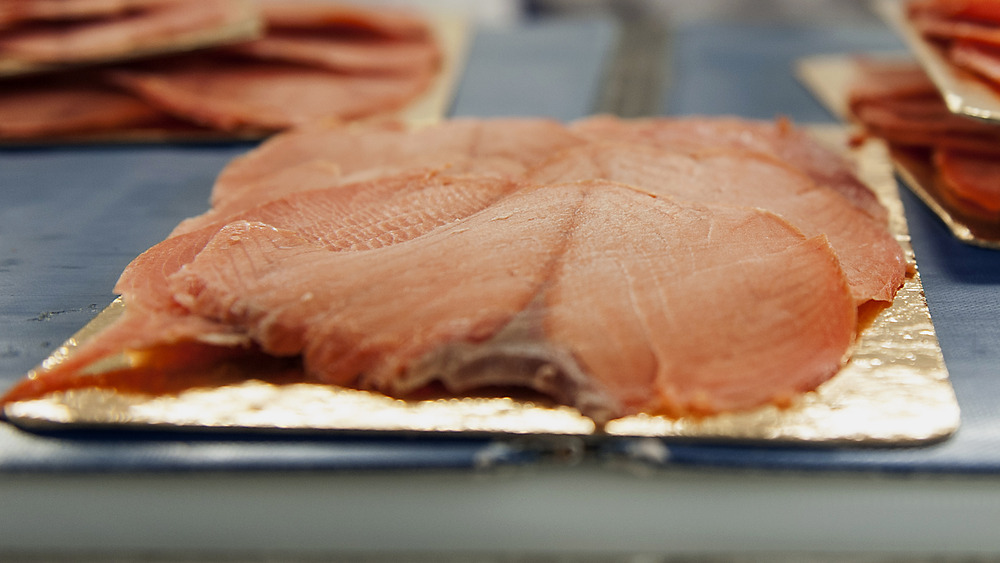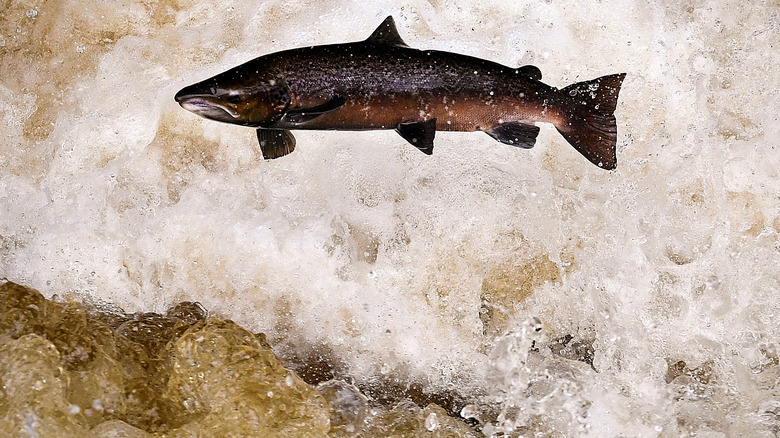The Real Reason Smoked Salmon Is So Expensive
If you want to order a smoked salmon from Alaska Sausage and Seafood, you had better be ready to gut your wallet. As of this writing, it would cost you $51.53 for approximately 1.75 pounds of smoked salmon, or just short of $30 per pound.
One clear reason why smoked salmon should command such prices is that in terms of salmon weight, the fish only contains so much fillet. To a question regarding how much fillet one can derive from a salmon in 2011, Marx Foods cited The Book of Yields' estimate that 75% of a dressed salmon, or 12 ounces per pound, is fillet. If the salmon is pre-gutted, the book lowers its estimate to 70%.
Here it is important to note (as does The Daily Optimist) that the fillets and percentages mentioned above count for less than 40% of the salmon's undressed body, which includes the blood, the fat, the bones, and the stomach flaps, among other bits.
Then there is the smoking. Meat and Sausage states that during salting and smoking, a salmon's weight can be reduced by 7% to 9% in each stage, making a total amount of weight lost between 14% to 19%. That 12 ounces, then, shrinks to 9.6 per pound of fish after the 60% of viscera and other less desirable parts have been stripped from the fish. So, the demand for smoked salmon exceeds what its body carries, meaning prices must rise in order to profit.
Reducing the wasted sections of salmon
Another reason for the current high price of salmon could include the ongoing disruptions caused by the novel coronavirus pandemic. After all, as Delish covered, an outbreak of sea lice among the Norwegian salmon farms in 2016 caused prices to jump by over 50%. It's also true that the salmon offered by Alaska Sausage and Seafood is probably not like the salmon you can buy in a grocery store, but of presumably higher quality.
As with steak, however, one can avoid the costs by using sections of the salmon other than the fillet. Saveur, for instance, suggests you cook the belly as salmon tartare, mix the roe of a salmon into scrambled eggs, fry the skin as crackling, and eat the muscle or the collar. Additionally, as The Daily Optimist also noted, Norwegian scientists were improving upon the process to render the various "junk" that won't become animal feed, gelatine, or pharmaceuticals into an ingredient for health oils. Some people may still pay over $50 for select salmon, but with some imagination, the rest of the fish could feed just as well for much less.

